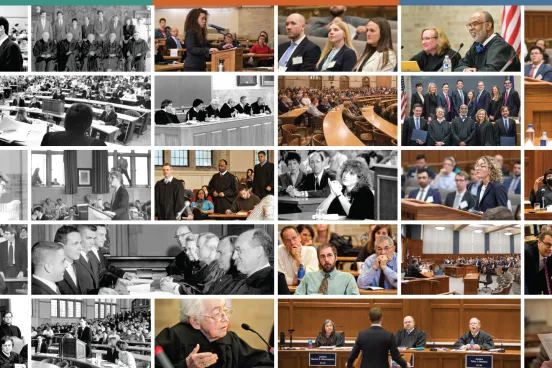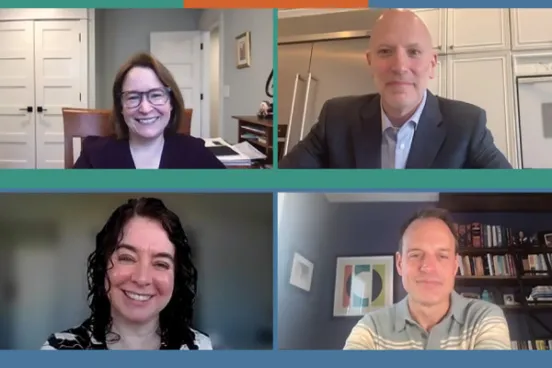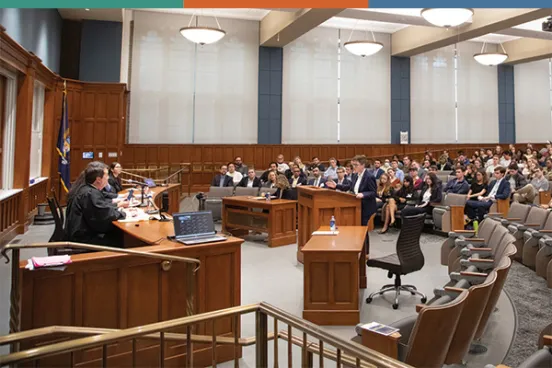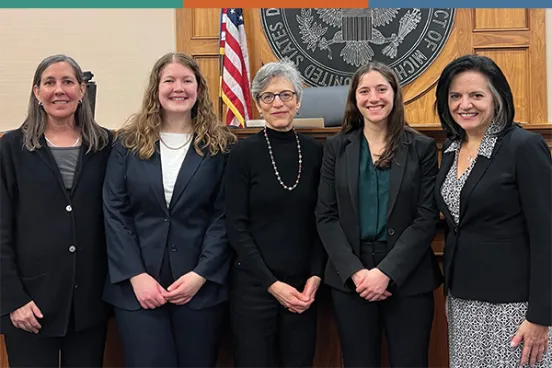Since its earliest years, the Campbell Moot Court Competition has welcomed a panel of notable judges to serve in the final round. In 1928—the first year for which records remain—the chief justice of the Supreme Court of Michigan, a federal district judge, and a prominent Chicago lawyer decided the case.
That tradition carries on today, and the 2025 competition welcomed the Hon. Rachel Bloomekatz of the US Court of Appeals for the Sixth Circuit, the Hon. Toby Heytens of the US Court of Appeals for the Fourth Circuit, and the Hon. David Stras of the US Court of Appeals for the Eighth Circuit.
“We were fortunate on occasion in getting a Supreme Court justice,” says former dean Theodore St. Antoine, ’54, the James E. and Sarah A. Degan Professor Emeritus of Law. “This added a bit of a polish to the moot court without interrupting the justices’ regular sessions.”
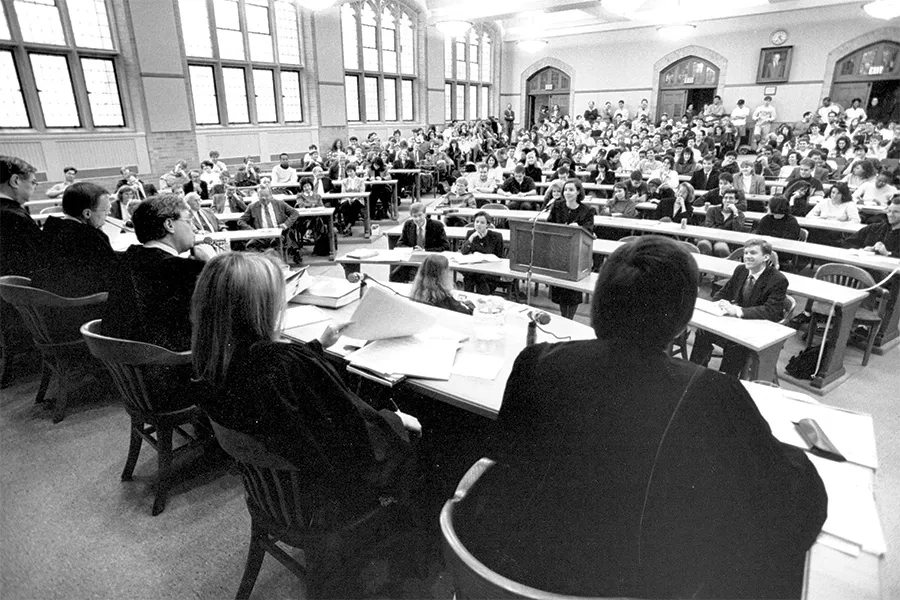

“You want to see how well they think on their feet.”
As both a judge and an alumnus of Campbell, the Hon. Roger Gregory, ’78, of the US Court of Appeals for the Fourth Circuit has a unique perspective. He empathizes with the anxiety students might be experiencing while also knowing how much the judges can expect of them.
“You’re not supposed to judge by whether you would agree or disagree with the merit of the case,” says Gregory, who served as a Campbell judge in 2012, 2017, and 2021.
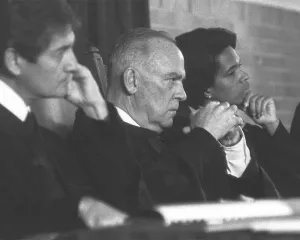
“As a judge, I want to know if they understand who they’re representing and what the impact of their argument is on their client in the context of the legal argument. So I’m looking for that nuance.”
As students make their argument, judges freely interrupt with questions, often requiring students to pivot from and then return to their argument or to concede a point. The most able students can do that well.
“And it’s really impressive,” says Gregory. “You want to see how well they think on their feet and how they can take it to the next level.”
The judges also have a responsibility beyond judging the students: to provide honest and constructive feedback. Students receive that type of feedback through each round of the competition leading up to the final on both their written and oral arguments.
“If you’ve gone through the preliminary round, you’ve seen other people’s arguments; you’ve seen weaknesses in your argument,” says rising 3L Anna Kallmeyer, chair of the Campbell Moot Court Board for the 2024–2025 academic year. “And people use that to improve their arguments.”

In the first years of the moot court, when it was organized around student clubs, third-year students served as preliminary round judges.
Today’s competition relies on a large group—more than 70 this year—of legal practitioners, administrators, and faculty who grade the briefs and serve as judges in earlier rounds.
“I think for the most part, they’re looking for good speaking skills, whether students can engage respectfully with a bench, tone, and pacing,” says Kallmeyer.
“But also, do they know the case law? Do they know their argument? Do they know the weaknesses in their argument? All the competitors that get to the semifinal round are excellent speakers, and the faculty home in on the substantive law.”

Visitors from the High Court
The Law School has been fortunate to host a number of sitting and former justices of the US Supreme Court as Campbell judges during the final round, including:
William J. Brennan (1958)
Potter Stewart (1962 ,1965, 1966, and 1982)
Charles Whittaker (1963)
Byron White (1964 and 1975)
Thomas Clark (1967)
William J. Brennan (1969)
Harry Blackmun (1972)
Arthur Goldberg (1977 and 1981)
John Paul Stevens (1983)
Antonin Scalia (1992)

Name that Campbell Judge
It’s not only the dazzling oratory from student advocates that draws an audience during the final round of the Campbell competition. Since its inception, notable federal judges and justices of the US Supreme Court have served on the panel of judges during the final argument. How many can you name? Find the answers below the slideshow and thumbnail photos.
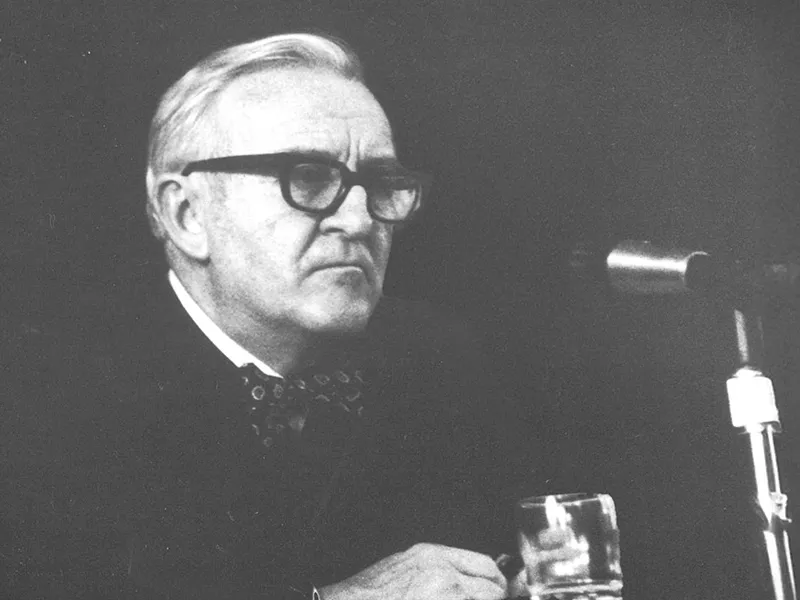
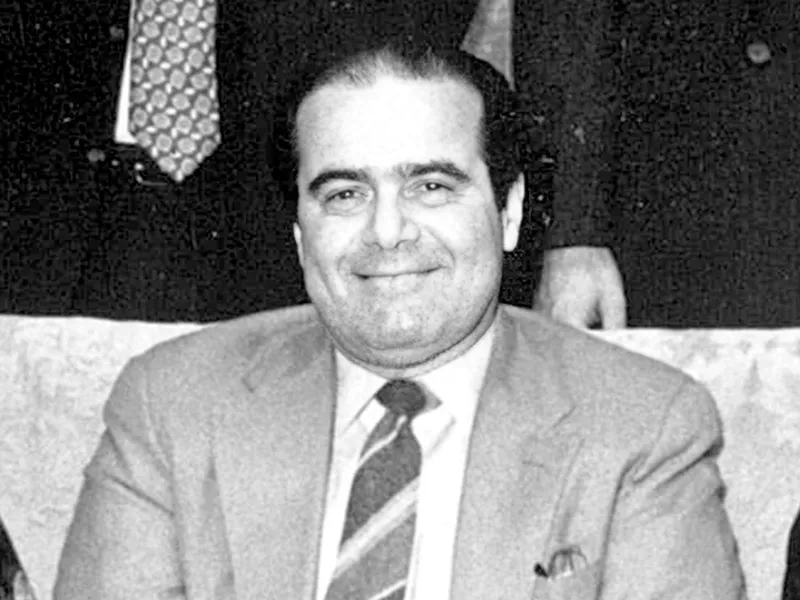
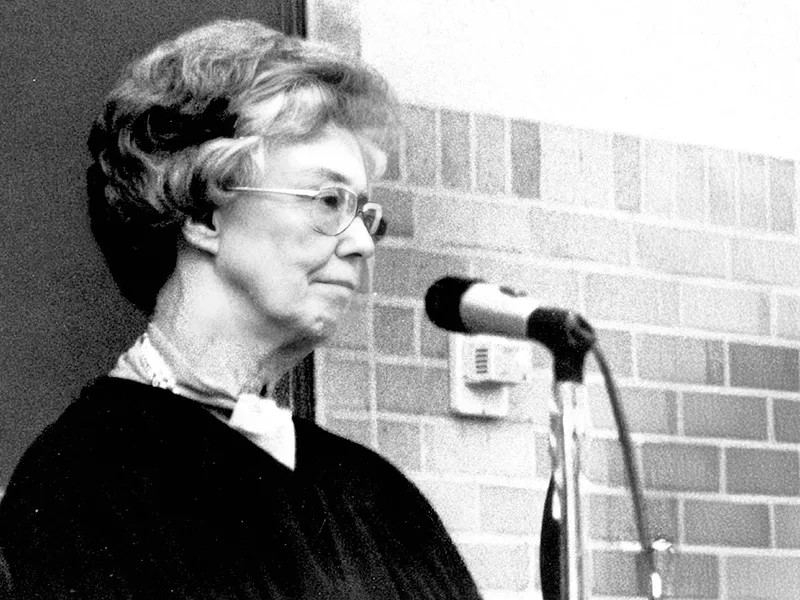
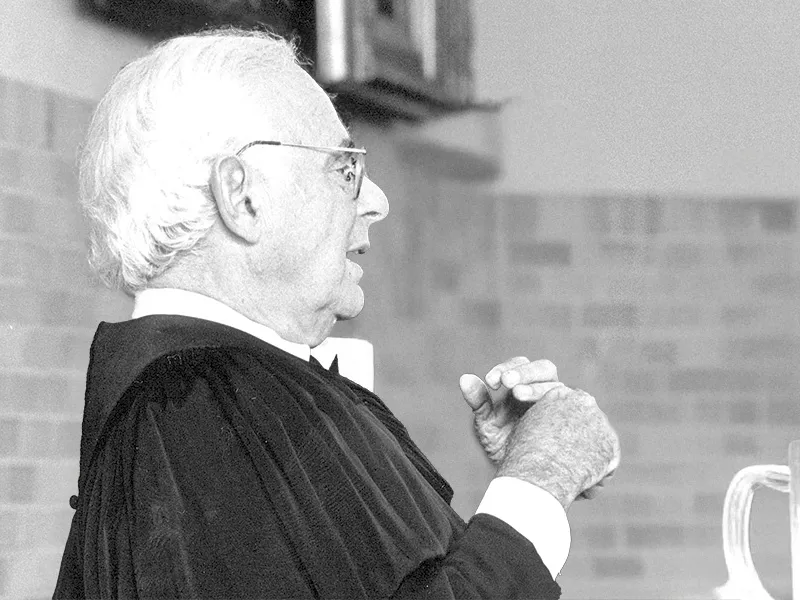
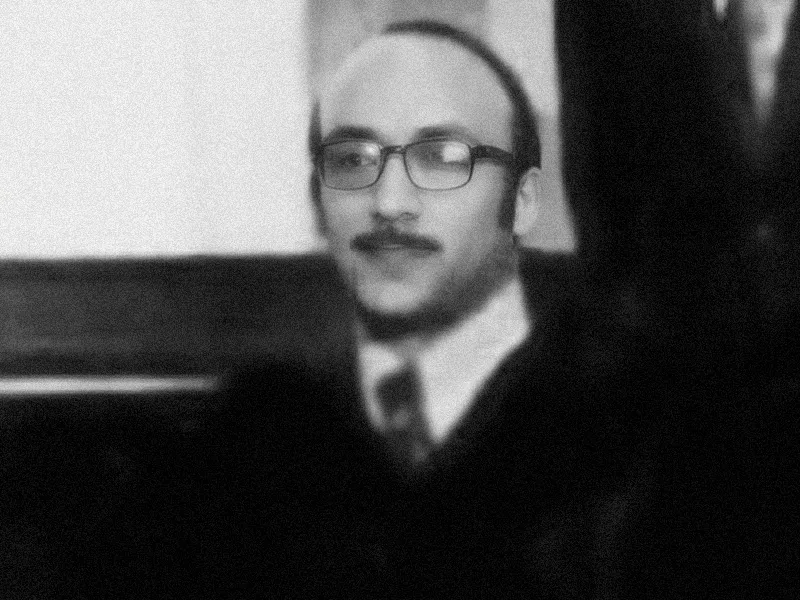
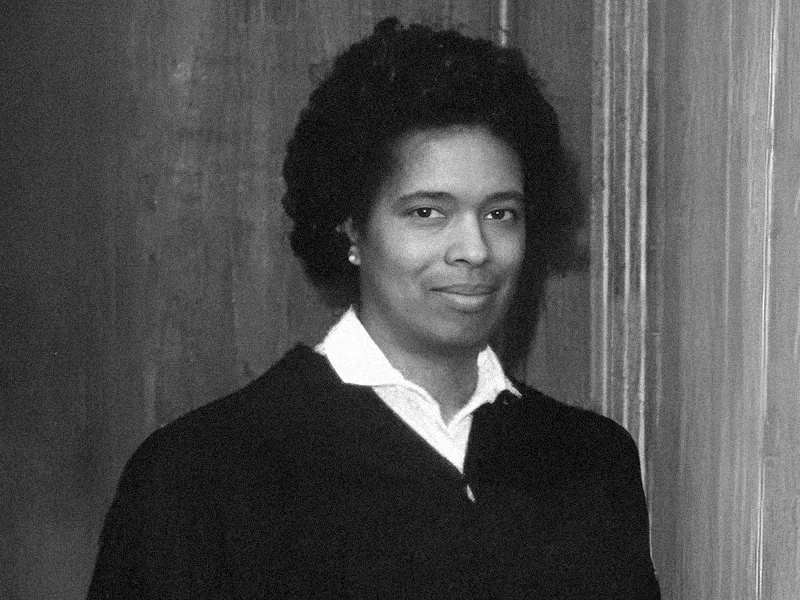
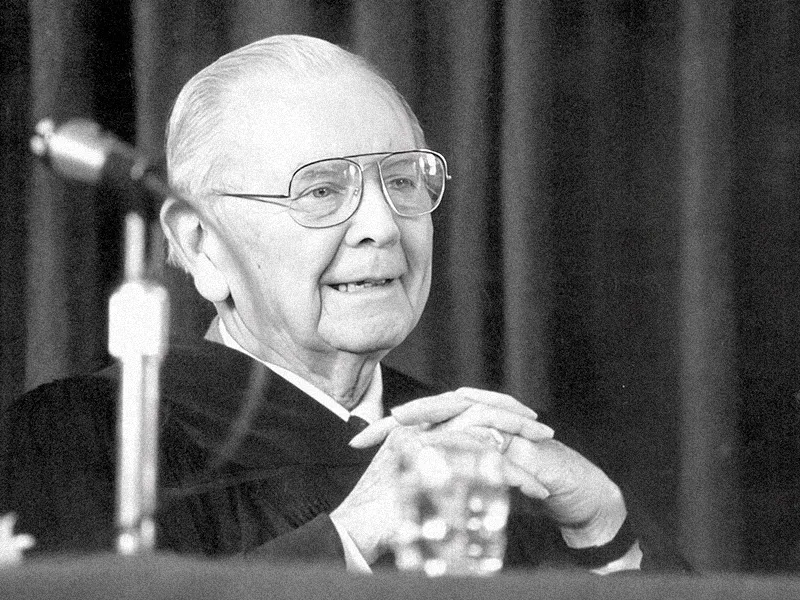
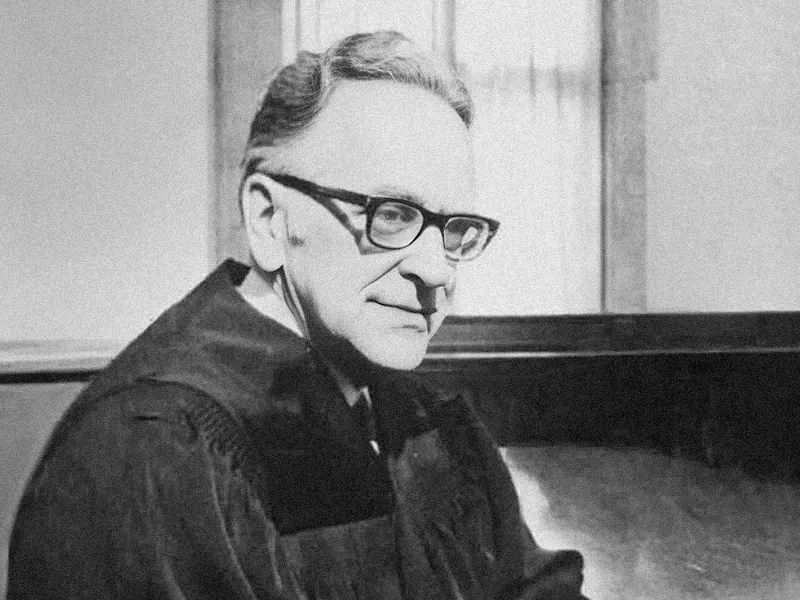
1) US Supreme Court Justice John Paul Stevens (pictured in 1983)
2) US Supreme Court Justice Antonin Scalia (pictured in 1992)
3) The Hon. Cornelia G. Kennedy, ’47, the first woman to lead a federal district court, of the US District Court for the Eastern District of Michigan (pictured in 1988)
4) The Hon. Avern Cohn, ’49, who served for more than 40 years on the US District Court for the Eastern District of Michigan (pictured in 1996)
5) The Hon. Harry T. Edwards, ’65, a Michigan Law professor who later served on the US Court of Appeals for the DC Circuit, including as chief judge (pictured in 1972)
6) The Hon. Amalya Kearse, ’62, the first Black woman to serve on a federal appeals court, of the US Court of Appeals for the Second Circuit (pictured in 1982)
7) US Supreme Court Justice William J. Brennan (pictured in 1958)
8) US Supreme Court Justice Harry Blackmun (pictured in 1972)


